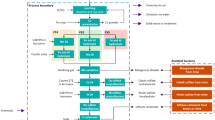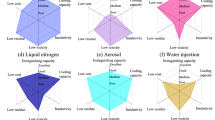Abstract
Determination of the influence and mechanism of metallic materials on SF6 decomposition under direct current (DC) partial discharge is one of the key aspects to improve SF6 decomposition component analysis (DCA). In this study, three kinds of metallic materials, namely, aluminum, copper, and 18/8 stainless steel, were made into needle–plate electrons, and then used in the SF6 positive DC partial discharge decomposition experiments. The influences of metallic materials on the five main decomposition components (i.e., CF4, CO2, SOF2, SO2F2, and SO2) were determined by gas chromatography–mass spectrometry. Results showed no significant correlation among the contents of CO2 for the different kinds of metallic materials. However, the metallic materials considerably influenced the contents of the other four gases. The difference in SF6 decomposition characteristics for the different metal electrodes was mainly due to the difference in anti-halogenation ability of metals and the passive film. Therefore, the impacts of different metallic materials should be considered when using SF6 DCA for the condition monitoring and fault diagnosis of DC gas-insulated equipment.









Similar content being viewed by others
References
Jianbin FAN, Peng LI, Jinzhong LI et al (2008) Study on key technology of ±800 kV UHVDC GIL. Proc CSEE 28(13):1–7
Florkowski M, Florkowska B, Zydron P (2016) Partial discharge forms for DC insulating systems at higher air pressure. IET Sci Meas Technol 10(2):150–157
Tominaga S, Kuwahara H, Hirooka K et al (1981) SF6 gas analysis technique and its application for evaluation of internal conditions in SF6 gas equipment. IEEE Trans Power App Syst 100(9):4196–4206
Shengchang JI, Lipeng ZHONG, Kai LIU et al (2015) Research status and development of SF6 decomposition components analysis under discharge and its application. Proc CSEE 35(09):2318–2332
Tang Ju, Dong Yang, Fuping Zeng et al (2016) Research status of SF6 insulation equipment fault diagnosis method and technology based on decomposed components analysis. Proc CSEE 31(20):41–54
Chu FY, Lutz F (1983) SF6 decomposition in a plasma arc for various electrode materials. In: The 6th International Symposium Plasma Chemistry, Eindhoven, The Netherlands, ISH, pp 1–7
Zhang X, Yao Q, Tang Ju et al (2008) SF6 actuality and perspective of proximate analysis of SF6 decomposed products under partial discharge. High Vol Eng 34(04):664–669
Kulseta J, Rein A, Holt PA (1979) Arcing in SF6 insulated equipment decomposition products and pressure rise. Proc Nord Insul Sym 3(1):25–29
Vijk AK (1976) The nature of metal-electrodes/SF6 reactions in SF6 decomposition due to direct-current interruption under simulated circuit-breaker conditions. IEEE Trans Electr Insul 11(4):157–160
Hirooka K, Kuwahara H, Noshiro M et al (1975) Decomposition products of SF6 gas by high-current arc and their reaction mechanism. Electr Eng Jpn 95(6):14–19
Chu FY, Massey RM (2013) Thermal decomposition of SF6 and SF6-air mixtures in substation environments. Gas Dielectr 11i:410–419
Tang Ju, Fuping Zeng, Huijuan Sun et al (2015) Influences of electrode materials on SF6 decomposition characteristics under partial discharge. High Vol Eng 41(01):100–105
Van Brunt RJ, Herron JT (1994) Plasma chemical-model for decomposition of SF6 in a negative glow corona discharge. Physica Scripta 53:9–29
Van Brunt RJ, Herron JT (1990) Fundamental processes of SF6 decomposition and oxidation in glow and corona discharges. IEEE Trans Electr Insul 25(1):75–94
IEC International Standard 60480 (2004) Guidelines for the checking and treatment of SF6 taken from electrical equipment and specification for its re-use
DL/T596—2005 (2005) Preventive test code for electric power equipment
IEC International Standard 60270 (2000) High voltage test techniques partial discharge measurements
Ding W, Hayashi R, Ochi K et al (2006) Analysis of PD-generated SF6 decomposition gases adsorbed on carbon nanotubes. IEEE T Dielectr Electr 12(6):1200–1207
Heise HM, Kurte R, Fischer P et al (1997) Gas analysis by infrared spectroscopy as a tool for electrical fault diagnostics in SF6 insulated equipment. Fresen J Anal Chem 358(7–8):793–799
Sauers I, Ellis HW, Christophorou LG (1986) Neutral decomposition products in spark breakdown of SF6. IEEE Trans Electr Insul 21(2):111–120
Chu FY (1986) SF6 decomposition in gas-insulated equipment. IEEE Trans Electr Insul 21(5):693–725
Ju TANG, Changjie CHEN, Fan LIU et al (2011) Detection of constituents from SF6 decomposition under partial discharge and recognition of insulation defect coding. Pow Syst Tech 35(1):110–116
Van Brunt RJ, Sauers I (1986) Gas-phase hydrolysis of SOF2 and SOF4. J Chem Phys 85(8):4377–4380
Wang F, Kang W, Jing H et al (2008) Principle, method and application of corrosion electrochemistry, 1st edn. Beijing Chemical Industry Press, Beijing
Gong M, Yu Z, Chen L et al (2009) Metal corrosion theory and corrosion control, 1st edn. Beijing Chemical Industry Press, Beijing
Meishuan Li (2001) High temperature corrosion of metal, 1st edn. Beijing Metallurgical industry press, Beijing
Lai GY (1990) High temperature corrosion of engineering alloys, 1st edn. OH press, ASM Metals Park
Molchan IS, Thompson GE et al (2015) Passivation behaviour of 304 stainless steel in an ionic liquid with a fluorinated anion. Appl Surf Sci 357:37–44
Acknowledgements
The authors appreciate the supported of Key Project of National Natural Science Foundation of China (51537009) and Special Project of China Postdoctoral Science Foundation (2016T90723).
Author information
Authors and Affiliations
Corresponding author
Ethics declarations
Conflicts of interest
The authors declare no conflict of interest.
Rights and permissions
About this article
Cite this article
Tang, J., Cao, Z., Zeng, F. et al. Influence of Metallic Materials on SF6 Decomposition Components under Positive DC Partial Discharge. Plasma Chem Plasma Process 37, 1523–1534 (2017). https://doi.org/10.1007/s11090-017-9841-7
Received:
Accepted:
Published:
Issue Date:
DOI: https://doi.org/10.1007/s11090-017-9841-7




